El Polar Ignite se trata de lo último de Polar; pero no es un reloj para correr, sino que se trata de un reloj destinado al fitness. Muchos se preguntan si no es simplemente una versión diferente del Vantage M con pantalla LCD dada su similitud en diseño, tamaño y precio. En absoluto, son dos relojes bastante diferentes.
El Ignite está enfocado a quien busca un reloj para medir su actividad y que realiza unos entrenamientos menos exigentes que los del usuario del Vantage. Pero no sólo sirve para seguir tu actividad, también ofrece un paquete completo de funciones de seguimiento de descanso y lo más cercano que puedes encontrar a un entrenador personal digitalizado.
Tras unas semanas de prueba con el nuevo Polar ya he tenido la oportunidad de conocer todo lo que ofrece, especialmente en cuanto a las nuevas funciones de control de descanso. Para ello he usado una unidad de prueba que Polar me ha enviado y que, una vez completado el análisis, volverá a Polar para continuar su rotación de pruebas y tests.
Como ya sabrás si eres lector habitual de la página, a continuación te vas a encontrar un análisis del reloj absolutamente detallado; con todas sus cosas buenas, pero también las malas. Todo para que cuando vayas a realizar tu compra sepas si el Polar Ignite cumplirá tus expectativas o es mejor optar por otro modelo que se adapte mejor al uso que vas a darle. Y si no eres lector habitual, ¿por qué no?
Si te gusta este análisis y te resulta de utilidad para decidir la compra de tu próximo reloj GPS, por favor usa los enlaces que encontrarás en esta página (bueno, puedes comprar ese reloj GPS que quieres o cualquier otra cosa). No pagarás más de lo que vale, pero el vendedor retorna un pequeño porcentaje que es lo que ayuda a cubrir los gastos de alojamiento de la página y, obviamente, mi trabajo. O también puedes suscribirte como miembro VIP.
Y una vez que está todo aclarado, pasemos a conocer todos los detalles del nuevo Polar Ignite.
Navegar a secciones específicas
Polar Ignite
Funcionamiento global - 7.5
Posibilidades de entrenamiento - 8.5
Plataforma y aplicaciones - 9.5
Autonomía - 7
Acabados y comodidad - 6.5
Relación precio/prestaciones - 7.5
7.8
TOTAL
- Diseño sencillo fácil de usar
- Nuevos algoritmos de descanso muy completos
- No elimina apenas prestaciones con respecto a modelos más caros de la marca
- Funciones de control de sueño bastante certeras
- Variedad de proposiciones de ejercicios en función de tu carga de entrenamiento y nivel de descanso
- Funcionamiento GPS algo irregular
- Encendido de pantalla tras giro de muñeca lento
- El control táctil es algo tosco
- Correa de plástico en el modelo más barato
- Autonomía inferior a lo anunciado por la marca
Polar Ignite, ¿qué es?
Creo que lo más inteligente es empezar por aclarar hacia qué segmento está orientado el Polar Ignite. Porque se trata de un reloj GPS con una estética muy similar al Vantage M y que, a fecha actual, tienen un precio muy similar. Sin embargo no están enfocados al mismo usuario o los mismos deportes.
Mientras que el Vantage M es un reloj de carrera y triatlón, el Polar Ignite está pensado para un uso principal de fitness. Eso no quiere decir que carezca de las funciones del Vantage M; al contrario, son muchas las funciones del Vantage las que vamos a encontrar en el Ignite. Es mucho más que una pulsera de actividad, aunque está pensada para los usuarios de éstas.
Son varias las cosas que nos hace acordarnos de los Vantage, lo cual es normal porque está basado en ellos. Pero no quiere decir que sean iguales. Para empezar la pantalla es diferente ya que en esta ocasión Polar ha optado por una LCD con colores mucho más vivos, aunque en contrapartida normalmente está apagada.
Esto tiene sus cosas buenas y sus cosas malas. Lógicamente la pantalla es mucho más viva, pero no puede estar siempre encendida porque si no la batería volaría. En el exterior a pleno sol es más difícil ver los detalles (aunque el Polar Ignite cuente con sensor de luz ambiental), y al no estar siempre encendida debemos esperar a que la pantalla decida mostrar la información cuando levantamos el brazo. En cuanto al manejo del reloj, se hace a través de pantalla táctil y sólo cuenta con un botón.
Prácticamente es ahí donde acaban las diferencias, hay muchísimas cosas de la gama Vantage que están en el Polar Ignite:
- Mismo sensor de pulso óptico de los Vantage, el Polar Precision Prime
- Mismo chipset GNSS de Sony
- Soporte para sensores Bluetooth externos
- Soporte para natación, tanto piscina como aguas abiertas
- Ofrece información de Training Load Pro (sólo en la plataforma, no en el reloj)
- Permite crear entrenamientos avanzados en Polar Flow y descargarlos al reloj para su realización
- Running Index, Fitness Test, Training Benefit, etc.
Podríamos decir que estamos ante un Polar Vantage M algo más pequeño y con pantalla LCD. Aunque no hay que olvidar que hay algunas cosas en las que no es tan capaz:
- No permite utilizar potenciómetros, ni de carrera ni de ciclismo
- No hay modos multideporte (duatlón, triatlón, etc.)
- La autonomía máxima son 17 horas (teórico), que ya está bastante bien… pero no alcanza lo de los Vantage
Sin embargo, hay novedades que están presentes en el Polar Ignite que no están (de momento) en los Vantage:
- Sleep Plus Stages
- Nightly Recharge
- Serene
- FitSpark
Es a estas métricas a las que dedicaré más tiempo durante esta prueba, no en vano es lo que diferencia al Ignite del resto de la gama de Polar (más allá de la tecnología usada para la pantalla) además de que es la primera vez que se ven en un reloj de Polar. Y digo de momento porque, salvo FitSpark, el resto de funciones llegarán este año a los Vantage M y Vantage V.
Así que vamos a darle un repaso rápido al Polar Ignite para que sepas todas las cosas buenas (y las malas) que te ofrece.
Un vistazo rápido al Polar Ignite
Sin duda lo que más destaca del Polar Ignite nada más verlo es su pantalla, por ser diferente a lo que vemos habitualmente en otros relojes deportivos. Porque si te asalta la duda, esto es un reloj deportivo y no un reloj inteligente o smartwatch.
Es una pantalla LCD con buen color y contraste, mucho más vistosa que la de sus hermanos Vantage u otros modelos de otras marcas que también utilizan pantallas transflectivas como las de los Vantage.
Esta pantalla, que parece fantástica a primera vista, tiene también sus problemas. El principal es que la pantalla se apaga después de unos segundos (de no hacerlo devoraría la batería). El segundo problema asociado es que es bastante lenta en volver a encender.
La pantalla permanece apagada y sólo se enciende cuando hacemos un giro de muñeca -y el reloj comprende que hemos hecho un giro de muñeca, porque en muchas ocasiones hay que repetir el gesto exagerándolo dos o tres veces- o cuando pulsamos el único botón del que dispone, este que puedes ver en el lateral izquierdo.
Esto es común a otros relojes inteligentes de similar pantalla, como puede ser el Apple Watch o Fitbit Versa. Pero lo cierto es que en el Polar Ignite funciona peor, porque no es sólo que le cueste reconocer el giro de muñeca, es también lo que tarda en encenderse la pantalla: algo más de un segundo.
Eso hace que en ocasiones gires la muñeca, esperes… y pantalla negra. Y repitas… y pantalla negra.
A la tercera vez ya optas por presionar el botón para ver la hora o, lo que es peor, ver los datos de tu entrenamiento mientras estás corriendo. Para lo cual han pasado 6 o 7 segundos perfectamente.
Por resumirlo en pocas palabras: es frustrante. Eso sí, a la hora de nuestros entrenamientos podemos dejar activada la pantalla en todo momento, pero ten en cuenta que el consumo de batería será muy alto.
Aquí no acaban mis quejas con la pantalla. El otro factor es que se trata de una pantalla táctil, por lo que todo el control se realiza deslizando el dedo y pulsando en la pantalla. Es poco precisa, y para opciones tan básicas como seleccionar un perfil de deporte hay que deslizar el dedo en numerosas ocasiones ya que a veces pasamos dos perfiles, o no llegamos ni al primero.
Por suerte toda la configuración la hacemos en el teléfono, por lo que a la hora de la verdad la interacción con la pantalla es mínima.
Estos son mis principales problemas con el Polar Ignite. A su favor decir que Polar puede mejorar el comportamiento tanto de la pantalla como del reconocimiento del giro de muñeca a través de actualizaciones de firmware. Pero hace ya un tiempo que el reloj está en el mercado y todavía no hay nada al respecto.
Bueno, a decir verdad tengo otro problema con el Ignite, la calidad de la correa en el modelo más barato (el de color negro). No recuerdo una correa tan mala en un reloj de este tipo. Está fabricada en plástico y al tacto se siente bastante barata. Realmente hace desmerecer al resto del reloj que, sin ser una obra de orfebrería, tiene un buen aspecto general gracias al bisel y el botón de acero inoxidable.
Solucionarlo es relativamente sencillo. Puedes optar por la versión con correa de silicona (que cuesta 30€ más), o bien comprar una correa a tu gusto, pues la que utiliza es de formato estándar de 20mm.
La sensación al tacto y en la muñeca es totalmente diferente. Parece mentira que algo tan sencillo como la correa de un reloj pueda cambiar tanto la experiencia.
Cambiarla es cuestión de segundos ya que tiene el sistema de cambio rápido de correas.
No entiendo cómo un fabricante como Polar puede caer en este error. Es cierto que te ofrecen una opción superior con una correa de mayor calidad; pero el coste de ofrecer una correa decente como base, en comparación con la que trae, es de céntimos.
Sí, cambiarla es muy fácil, pero cuando estás probando el reloj en una tienda y lo tienes en la mano se percibe como algo «barato», y si a continuación tocas te colocas cualquier otro reloj en la muñeca te va a parecer mejor. No tengo la menor duda que este simple hecho les va a restar ventas.
Pero no todo es malo, el Polar Ignite tiene muchas cosas buenas. En cuanto a deportes ofrece casi las mismas funciones que un Vantage M. Por ejemplo puedes crear entrenamientos de series en Polar Flow y descargarlos al reloj para que te ayude a realizarlos (indicando periodos de trabajo, descanso, etc).
Éstos puedes crearlos desde la web o desde la propia aplicación de Polar Flow.
Así mismo puedes descargar entrenamientos guiados para carrera para diferentes distancias (5km, 10km, media maratón, maratón).
Y también da acceso a Training Load Pro, de lo que podrás encontrar todos los detalles en la prueba de los Vantage M y Vantage V. Eso sí, a diferencia de éstos, en el caso del Polar Ignite no verás nada en la pantalla del reloj, pero sí podrás consultar la información a a través de la app de tu móvil.
Por supuesto el resto de funciones básicas como seguimiento de actividad diaria, pulsaciones durante las 24h, etc. está disponible en el Polar Ignite.
Quizá la omisión que más llama la atención (y que no tiene mucho sentido) es que no podemos marcar vueltas de forma manual. Entiendo que el reloj sólo tiene un botón, que sirve para pausar o finalizar una actividad, pero Polar podría perfectamente incluir la función de dar un golpe al reloj para marcar una vuelta al igual que en el Vantage V.
Esto quiere decir que si estás haciendo un entrenamiento de series en pista de 400m no podrás separar las vueltas de forma individual, como sí podrías hacer con cualquier otro modelo. Que entiendo que el usuario tipo del modelo no se vaya a calzar las zapatillas de clavos… pero que a cualquiera le puede apetecer marcar vueltas manuales en cualquier situación habitual.
Tampoco tiene posibilidad de configurar perfiles multideporte (como triatlón), pero no creo que esto sea algo que preocupe al usuario tipo de este reloj.
Novedades Polar Ignite
Toca hablar de cuáles son las novedades que ha traído consigo el Polar Ignite que, a pesar de ser un modelo básico dentro de la gama Polar, no por ello deja de aportar métricas que no se habían visto hasta el momento.
Y no es sólo interesante hablar de ellas por las métricas en sí, sino también porque la mayor parte de ellas llegarán también a los Vantage. Así que si eres usuario de éstos te servirá para saber qué es lo que llegará a tu reloj a corto plazo. Estas son las que ofrece el Polar Ignite:
- Sleep Plus Stages: Información más detallada de cómo ha sido tu sueño al separarlo en diferentes segmentos (Llegará a los Polar Vantage)
- Nightly Recharge: Más allá de cómo ha sido las fases del sueño y del tiempo que has pasado dormido, ¿ha servido ese tiempo para descansar y recargar energía? (Llegará a los Polar Vantage)
- FitSpark: Guía de entrenamiento recomendado para cada día, basándose en el entrenamiento de días anteriores y en cómo has descansado (NO Llegará a los Polar Vantage)
- Serene: Ejercicios de respiración guiados (Llegará a los Polar Vantage)
Tal vez más allá de las métricas propiamente dichas, lo más interesante es la relación que hay entre ellas y cómo se complementan. No es una métrica que te indique un valor y hasta mañana, sino que está encadenado a modo de escalera.
Todo parte de Sleep Plus Stages que, aunque muestra un montón de datos, es lo más básico de todo. Esta función mira a cómo ha sido tu descanso durante la noche. A continuación viene Nightly Recharge, que utiliza los datos de Sleep Plus Stages y los combina con datos de frecuencia cardíaca, variabilidad de pulso y tasa de respiración para determinar si has descansado. Y como colofón FitSpark, que hará recomendaciones de entrenamiento en función de entrenamientos pasados y de cómo ha sido el descanso que indica Nightly Recharge.
Como ves, las tres métricas principales están relacionadas. Eso es lo fantástico del Polar Ignite, que sabes de dónde viene las recomendaciones y que todo está ligado entre sí.
Frecuentemente se suele decir que el descanso es la parte más importante en el entrenamiento de un deportista, y no está falto de razón. Es la clave de una recuperación óptima y de poder volver a entrenar con energía al día siguiente. Es cuando se realiza el crecimiento muscular y la reparación de los tejidos.
Eso sí, antes de continuar me gustaría aclarar que no tengo ningún medio con el que poder comparar los datos obtenidos, así que en cierta medida lo debemos de coger con pinzas. Todo esto podría ser totalmente aleatorio, aunque en cierta medida los resultados que he ido viendo coinciden con mis propias sensaciones. Cuando me decía que no había dormido bien me encontraba más cansado que cuando la indicación era que el sueño había sido recuperador.
Pero vayamos con detenimiento por cada una de estas métricas para que entiendas bien qué es lo que ofrece cada una de ellas.
Sleep Plus Stages
Sleep Plus Stages es un análisis de las diferentes fases del sueño, tanto de la noche pasada como teniendo en cuenta la tendencia a lo largo del tiempo, resumiéndolo todo en un único valor para que podamos compararlo fácilmente entre diferentes días.
Para tener estos datos lógicamente tendremos que dormir con el reloj puesto en la muñeca, pues lo que hace Polar es identificar las diferentes fases del sueño a través de polisomnografía. Médicamente esto se mide a través del registro de la actividad cerebral, la respiración, niveles de oxígeno en sangre y actividad muscular; con el fin de identificar trastornos del suelo.
Con el reloj nosotros tendremos información, gracias al sensor óptico, de la respiración y niveles de oxígeno en sangre; mientras que la actividad muscular se puede medir por el acelerómetro. Por tanto a diferencia de una prueba médica lo que no tenemos es la actividad cerebral.
Al acceder a la opción de sueño esto es lo que nos encontraremos.
En la parte superior puedes ver cuáles han sido las diferentes fases del sueño por las que he ido pasando, así como la duración de las mismas. También podemos ver en qué momento hemos ido pasando por cada una de estas fases.
En el caso concreto de este día me dice que he dormido algo más de 6 horas (desde la 1:00 hasta las 7:16). No es que haya estado controlando la hora, pero se ajusta bastante a la realidad.
En cuanto a las fases, el 60% del periodo de descanso ha sido de sueño ligero, con sólo 1 hora de sueño profundo. Tanto ésta como en menor medida la fase REM son en las que realmente descansamos tanto física como mentalmente. Cuanto más tiempo consigamos de sueño profundo, mejor nos encontraremos.
A continuación tenemos el valor de sueño que se ha otorgado para esa noche en cuestión (68 sobre 100), junto con un desglose de los valores de carga, estabilidad y regeneración del sueño.
Todos los valores los compara con la media habitual para determinar si en tu caso concreto el valor de esa noche ha sido bueno o no tan bueno. Algo que es normal, pues todo depende de cada individuo y no todos dormimos de la misma manera.
El problema principal de esta noche es que he dormido por debajo del tiempo habitual: 6h 16min, cuando la media habitual es de 6h 54min.
En el reloj también podemos ver los mismos datos, aunque de una forma menos gráfica. Normal, el espacio de pantalla no es el mismo, pero una vez que sabes lo que es cada valor lo puedes identificar rápidamente.
Como la puntuación está basada en tu media habitual, la primera vez que utilizas el reloj es necesario al menos tres días de datos consecutivos para poder tener esta información. En caso de perder una noche (porque no llevases el reloj puesto, por batería baja o por haberlo dejado cargando) volverás a recuperar los datos de sueño al día siguiente.
Nightly Recharge
El siguiente paso en la escala de análisis de recuperación es Nightly Recharge. A los datos de carga de sueño (que es lo que hemos visto anteriormente en Sleep Plus Stages) Polar le suma lo que han denominado SNA (Sistema Nervioso Autónomo) o, dicho de otra manera, tu relajación en las primeras 4 horas de sueño.
Para obtener los datos de carga de SNA se utilizan tres variables: frecuencia cardíaca, variabilidad del pulso y frecuencia respiratoria.
Por tanto, muchos más datos a los que hacer caso y liarnos, ¿verdad? No necesariamente, porque si de algo se preocupan en Polar es de hacer que todo quede resumido en datos que cualquier persona pueda comprender y usar en su beneficio.
Nightly Recharge lo que hará es combinar todos los datos anteriormente vistos (los de Sleep Plus Stages y Nightly Recharge) y darte una valoración de cómo ha sido el descanso durante la noche de una forma fácil y descriptiva: buena, muy buena, regular, insuficiente… Y luego si quieres indagar en los datos por separado podrás hacerlo, pero partiendo de una idea general para que no seas tú el que tenga que interpretarlo todo.
Nuevamente las valoración se hace comparando con datos pasados de tu historial, no con datos genéricos (que pueden o no ser iguales para todos).
Aquí tienes un ejemplo de diferentes estados tras el descanso nocturno.
Y partiendo de los datos que obtenemos en cada noche, Nightly Recharge también te da una serie de consejos sobre el entrenamiento que puedes realizar durante el día, para lo cual también tendrá en cuenta los datos de Training Load Pro. Es decir, seguimos encadenando datos, que es precisamente en lo que destaca todas estas nuevas funciones.
En mi caso Training Load Pro está por las nubes porque no he ido registrando mis entrenamientos de forma constante en la plataforma de Polar, por lo que parto de 0 a «entrenar mucho», así que necesitaría muchos más días para equilibrarlo. De hecho he tenido que «ocultar» entrenamientos para que FitSpark me ofreciese mayor variedad de ejercicios.
Como puedes ver, los mensajes han pasado de animarme a entrenar duro a que, a medida que he metido entrenamientos y en función del descanso (que en general ha sido bueno), mostrarse algo más cauto. Y así te lo indica la propia aplicación.
Eso sí, debemos tener en cuenta el contexto de estos mensajes. Por ejemplo el día en el que la recuperación ha sido insuficiente la recomendación es que podía entrenar y que prestara atención a mis sensaciones. Ese «hoy puedes entrenar» no significa que pueda hacer un 8×1000, sino que me está diciendo que, aunque no haya descansado lo suficiente, deba quedarme tirado en el sofá.
En su lugar puedes hacer un entrenamiento de recuperación, un rodaje tranquilo, un paseo o ejercicios de movilidad. Todo eso ya entra en el criterio de cada uno.
Al igual que ocurre con Sleep Stages Plus, en el reloj también podemos ver toda esta información.
Con la diferencia que aparece también como cabecera de una de las vistas de reloj que están disponibles (y que podemos cambiar deslizando lateralmente).
Recomiendo acostumbrarse primero a verlo en la aplicación para aprender todos los términos, lo que implica cada uno de ellos y cómo lo gestiona el algoritmo para saber interpretarlo en el reloj, ya que no es tan sencillo al ser mucho menos gráfico.
FitSpark
FitSpark es el culmen de todos los datos que se han ido recogiendo anteriormente acerca de tus entrenamientos pasados (con Training Load Pro) y tu descanso (Sleep Stages Plus y Nightly Recharge).
En definitiva, FitSpark es un entrenador virtual inteligente que, partiendo de todos los datos anteriores y tu nivel de condición física actual; determina cuáles son los ejercicios recomendados para hacer ese día.
Recuerda que los entrenamientos que ofrece el Polar Ignite no tienen como objetivo prepararte para correr una maratón o un Ironman, su objetivo es simplemente mantenerte activo y en forma. Lo importante es que esas recomendaciones las da teniendo en cuenta todos los valores indicados anteriormente, ofreciéndote variedad y ejercicios recomendados. O incluso recomendarte que descanses, sin más.
Eso es lo que hace a FitSpark algo fantástico, el ser una función proactiva. Polar no son los primeros en ofrecer planes de entrenamiento, incluso el Suunto 5 o Amazfit Stratos ofrecen unos entrenamientos adaptativos; pero ninguno de ellos tiene en cuenta el historial pasado de actividad o tu nivel de recuperación.
Lo máximo que podían hacer era reajustarse, y si hoy no hacías tu tirada larga de 18km no pasaba nada… te la pasan a mañana. Pero no tienen en cuenta que hoy no has hecho ese entrenamiento porque te has ido de farra y estás hecho un trapo, algo que se reflejaría en tu nulo nivel de descanso.
Sin embargo Polar verá que has dormido 3 horas, que tenías la frecuencia cardíaca por las nubes y que no has descansado porque todavía te está dando vueltas todo; y en consecuencia te guiará sobre lo que puedes o debes hacer.
O al contrario, quizás vea que has dormido como un lirón y llevas 3 días sin entrenar, por lo que puedes trabajar a tope.
En la pantalla del reloj podrás ver qué entrenamiento te recomienda.
Esa noche Nightly Recharge ha dicho que he dormido bastante bien, y el día anterior ha sido de recuperación con un paseo de 30 minutos y 20 minutos de gimnasio. Así que la recomendación para hoy es: ¡darle caña! ¿Cuál eran mis sensaciones en ese momento? Pues eso mismo, que podía hacer un entrenamiento cañero sin mayor problema.
Si pulsas sobre la pantalla tendrás una descripción rápida de qué es lo que te ha recomendado, siempre dentro de una de las tres categorías: fuerza, cardio o complementario
¿Que no me gusta lo que me recomienda? Puedo explorar otras opciones si pulso en la opción de «Más».
Otra posibilidad que recomienda es trabajo de intervalos corriendo, por si no me apetece levantar hierros en el gimnasio.
Y si eliges cualquier entrenamiento de cardio (como este de intervalos) también te irá guiando a lo largo del entrenamiento, aquí puedes ver el «esquema» que vamos a seguir.
La recomendación no sólo incluye el tipo de ejercicio o la duración del mismo, también la zona de frecuencia cardíaca o, lo que es lo mismo, la intensidad que debemos aplicar.
En la imagen anterior puedes ver que tenemos un calentamiento en Z1-Z2, preparación para intervalo en Z3, 4 intervalos de Z4-Z5 con recuperación en Z3 y un enfriamiento de vuelta a Z1-Z2.
Pongamos que optamos por la opción de cardio con intervalos y completamos el entrenamiento. ¿Hemos terminado? Si… o no. Ahora tenemos más sugerencias por si queremos ejercitarnos algo más con ejercicios de core o movilidad.
Para los entrenamientos de core y de fuerza podremos ver en la pantalla del reloj animaciones y detalles sobre cada uno de los ejercicios que nos está recomendando hacer.
En cuanto a los entrenamientos por zonas de frecuencia cardíaca el reloj te irá guiando en tiempo real. Por ejemplo si en el calentamiento de Z1-Z2 te pasas de la ralla, el reloj vibrará para avisarte. Lo mismo ocurre si en la parte de trabajo que debes hacer en Z3 superas la zona tanto por arriba como por abajo.
¿Es un sustituto a un entrenador personal? Por supuesto que no, pero es la primera vez que una función de este tipo es verdaderamente interesante, al menos para el tipo de público al que Polar Ignite está orientado. No está siguiendo un plan previamente establecido basado en un calendario, sino que es más inteligente que todo eso ya que te dará las indicaciones de ejercicios basándose en historial pasado y nivel de descanso. Cada día puede ser diferente.
Lógicamente si eres un corredor de fondo que hace dos o tres medias maratones y una maratón al año, FitSpark no te servirá de mucho porque tu objetivo deportivo es diferente.
FitSpark es perfectamente válido para el que quiere mantener una vida activa, pero no sabe realmente cómo hacerlo.
Lo cual no quiere decir que no haya margen de mejora, como más variedad de ejercicios de cardio o que pueda tener otras variables además de las zonas de frecuencia cardíaca. ¿Pero como un primer paso? Polar lo ha hecho genial, y ofrece algo realmente interesante para aquel que no aunque no sigue un plan de entrenamiento, sí busca una guía para llevar una vida saludable y activa.
Serene
Por último tenemos Serene, algo bastante menos interesante que las opciones que has visto anteriormente. Se trata simplemente de ejercicios de respiración guiados, enfocados a ayudar a relajarte.
Siendo sincero no le he dado mucha utilidad, al igual que no se la he dado en ningún otro reloj de los muchos que incluyen esta función (ya sea Apple Watch, Android Wear o algún Fitbit).
Por defecto está configurado para que hagas el ejercicio durante 3 minutos en intervalos de 5 segundos (5 segundos inspirando, 5 segundos expirando), pero se puede ajustar a lo que queramos.
Una vez iniciado simplemente tienes que seguir las indicaciones en pantalla.
Y tras terminar te dará un resultado sobre cómo ha sido el ejercicio, clasificándolo en diferentes zonas caracterizadas por piedras preciosas.
Esta función no tiene relación con el resto de mediciones de descanso que hemos visto anteriormente. Es algo totalmente independiente y sus resultados no afectan a ninguna otra métrica.
¿Utilidad real? Si te digo la verdad yo no se la encuentro, haciendo estos ejercicios sigo igual de estresado que antes. ¿Será cuestión de hacerlos con más frecuencia?
Sensor de pulso óptico
El Polar Ignite utiliza el mismo sensor de pulso óptico del resto de la gama actual de Polar, lo cual incluye al Polar Vantage V de 500€. Sin duda alguna el sensor óptico de Polar impresiona por la cantidad de cosas que incluye en la parte trasera del reloj.
Un total de 9 LEDs de color rojo y verde, cuatro sensores ópticos, cuatro electrodos… técnicamente es un sensor muy avanzado que no sólo sirve para medición del pulso sino también para todas las funciones de control de descanso que has visto hasta ahora.
Es un sensor eficiente y no tiene un impacto demasiado elevado en el consumo de batería, lo cual es de suma importancia en este caso, ya que si lo tenemos desactivado no podremos disfrutar de todas las funciones de recuperación y descanso del Ignite, que es precisamente el motivo de su existencia.
Como recordatorio, ten en cuenta que un pulsómetro óptico no va a funcionar igual para todos. Tatuajes, vello corporal, el tono de la piel… todo ello puede crear una gran diferencia entre personas.
Estas pruebas están realizadas con un «amplio» espectro de usuarios: uno, que soy yo. Lo que a mi me funciona puede que a otro no le funcione de la misma manera, o que le funcione mejor.
Lo más importante que debes tener en cuenta es que hay que llevar el sensor de forma correcta. Apretado (pero no como si te estuvieses haciendo un torniquete) y dejando una separación de aproximadamente un dedo con respecto al hueso de la muñeca. Si te aseguras de cumplir estos detalles podrás estar seguro que conseguirás los mejores resultados posibles para tus condicionantes de color de piel, etc.
En cualquier caso vamos con unas cuantas pruebas para ver cómo se comporta el sensor en este caso específico. Empezaré por esta salida de montaña, en la que además del Polar Ignite estoy usando el sensor óptico del Suunto 5. El Garmin Forerunner 945 está emparejado con un sensor pectoral HRM-Tri.
En general el resultado es bastante bueno. Se puede ver cómo hay algunos puntos en los que hay algunos picos erróneos (como alrededor del minuto 35), pero en general la estabilidad en las tres gráficas es notable, algo que no es sencillo en este tipo de actividad dada la cantidad de cambios en la intensidad del entrenamiento.
Destaca también el final de entrenamiento, entre el 1:05 y 1:11 y el último tramo. En ambos casos me detengo y ando despacio, o estoy parado por completo. Esto es algo crítico para los sensores ópticos pues uno de los datos necesarios en el algoritmo es la cadencia de carrera. Si no hay movimiento… dificultamos la medición al sensor óptico.
Otra salida de montaña con los mismos relojes, pero en esta ocasión cambiando un poco los sensores. El Suunto 5 va emparejado con un sensor Polar H10, mientras que el FR945 va en esta ocasión haciendo uso de su sensor óptico, el nuevo Garmin Elevate 3.
Aquí podemos ver varias cosas. Por ejemplo que en los cambios bruscos de intensidad el retraso del sensor del Polar Ignite es mayor que en el caso de Garmin. Puedes ver cómo en todas las subidas y bajadas de intensidad la gráfica del Polar está ligeramente desplazada a la derecha, siempre va con algo de retraso.
Aunque la gráfica del Forerunner 945 también se comporta así en ciertas ocasiones, en general es más rápido en cuanto hay cambios de intensidad. Volvemos a ver cómo en los puntos en los que me paro o reduzco la marcha las gráficas se pierden totalmente. No es algo exclusivo del Polar, ocurre en los tres sensores.
Cuando no hay cambios importantes de intensidad, la lectura es correcta en casi todo momento. El problema aparece siempre que hay cambios bruscos, como en un entrenamiento de series.
¿He dicho entrenamiento de series? Pues aquí tienes uno. Se trata de un entrenamiento de cuestas: 3x subida fuerte, con descanso bajando al trote al punto inicial.
En esta ocasión no hay sensor de pecho, pero sí llevo el Polar OH1+ que es prácticamente igual de preciso.
Muy buen resultado por parte de los tres sensores, que concuerdan casi al 100% durante la totalidad del entrenamiento. En el caso del Polar Ignite necesita algo más de tiempo al inicio del entrenamiento, pero una vez que llegan al mismo punto, alrededor del minuto 2, el resultado es muy similar incluyendo los tres intervalos.
En este caso es el FR945 el que parece tener algún pico excesivamente alto en la tercera subida, pero aparte de eso un resultado perfectamente válido.
En resumen, el Polar Ignite repite los buenos resultados que estoy acostumbrado a ver en los Polar Vantage. Como en cualquier otro sensor óptico hay ligeros retrasos cuando hay cambios de intensidad, tales como entrenamientos de series o carrera por montaña donde estemos constantemente subiendo y bajando cuestas; pero en entrenamientos donde la intensidad sea estable no presenta ningún problema.
Recepción GPS Polar Ignite
Al igual que las pruebas del sensor óptico que has visto anteriormente, las comparativas de GPS se hacen de la misma manera: con los relojes acompañándome en mis entrenamientos habituales. Llevando tanto el Polar Ignite como otros modelos, y comprobando dónde aparecen los problemas. No tengo ninguna ruta definida donde establezca una puntuación por el sencillo motivo que hay otros factores externos que no debemos de olvidar nunca.
Cosas como nubes, hojas de los árboles o simplemente la posición del satélite pueden alterar los resultados del GPS de un día para otro. Es por este motivo por el que prefiero hacer este tipo de comparativas en lugar de tener un recorrido predefinido y valorarlo a partir de este.
Las pruebas que he hecho con el Suunto 5 han sido utilizando la configuración GPS + Galileo, que será la que utilizaréis la inmensa mayoría de vosotros.
Empezaré con un entreno corto y complicado para el GPS. Me acompaña mi hijo, así que la velocidad es baja además de haber bastante zona urbana con problemas de recepción de señal.
Pero sí quiero resaltar la primera zona, donde llevamos un ritmo constante y cruzamos un parque con buena recepción de satélite, algo que con cualquier modelo de reloj no debería presentar problemas.
Tanto el Garmin 945 como el Vantage M tienen un buen comportamiento, haciendo los giros en las calles correspondientes o en los caminos que cruzo por el parque. Mientras tanto el Polar Ignite, ciertamente, parece totalmente perdido.

Lógicamente si la ruta grabada se ajusta a la ruta seguida el resultado final será bastante fiel, si el reloj tiene saltos contínuos de señal nos alterará tanto el ritmo como la distancia recorrida. Es por eso que me centro en analizar las gráficas, pues es lo que nos permite ver si el reloj está realizando los cálculos correctamente o no.
Continuando con los entrenamientos, vamos con alguno de los muchos entrenos de montaña que he realizado estos días.
El tramo que destaco a continuación no es excesivamente complicado, no es una zona de bosque sino de matorral bajo. En este caso las gráficas del Suunto 5 son un poco «inestables», en lugar de llevar el reloj en la muñeca lo llevaba en la mochila de hidratación, girándose en ocasiones y perdiendo la visibilidad de la antena hacia el cielo.
En cuanto al Polar Ignite, en general es decente, pero poco más. Puedes ver que es el que más se desvía de la ruta de forma constante.
Es un comportamiento que se repite a lo largo del entrenamiento. En este tramo el Suunto 5 va mirando hacia abajo, por lo que el rendimiento es bastante malo, pero en general el FR945 obtiene mejor resultado.
Los recortes por parte del Ignite en esta ruta son bastante frecuentes.
Vamos con una ruta diferente, pero en la misma zona. En este caso incluyo el Polar Vantage M, por comparar dos relojes que en teoría son técnicamente muy similares.
Sin embargo el comportamiento que ofrecen es bastante diferente. Con el Ignite la gráfica me tiene casi siempre corriendo fuera del camino por encima de los árboles, mientras que tanto el FR945 como el Vantage tienen un rendimiento notablemente mejor. Aquí puedes ver esas zonas que he subrayado, en las que el Ignite se va fuera del camino.
Como hemos ido viendo hasta ahora, es un error bastante común en la gráfica. Son muchos los puntos en los que está demasiado lejos del camino real, y siempre es el Ignite el que se hace notar.
No siempre el rendimiento es malo, en ocasiones tiene momentos de lucidez con buen rendimiento, como este otro ejemplo donde coincide plenamente en la gráfica con los otros dos modelos, incluso por la zona urbana donde la recepción es mucho más complicada.
Resumiendo, la recepción GPS del Polar Ignite es mejorable. No es algo horroroso, pero está lejos de ser buena. Y es evidente que lo puede hacer mejor porque en la comparativa con el Vantage M se puede ver perfectamente cómo su primo ofrece mejor resultado.
También hay que tener en consideración el tipo de público objetivo de cada producto en cuestión. En el caso del Ignite será el de corredores esporádicos (o incluso gente que no corra jamás), motivo por el que Polar haya decidido destinar mayores recursos a otros áreas.
En cualquier otro modelo sería algo que criticaría bastante enérgicamente, pero en este caso particular creo que el rendimiento es suficiente (que no bueno) con respecto a lo que Polar quiere obtener del Ignite.
Comprar Polar Ignite
Espero que este análisis completo te haya ayudado a decidir si es un dispositivo válido para ti o no. Todo el trabajo que realizo puedes consultarlo sin ningún tipo de coste, pero si quieres apoyar la web y con ello el trabajo que realizo, la mejor forma de hacerlo es comprar tu nuevo dispositivo a través de los enlaces que facilito a continuación.
Y si no lo compras hoy, ¡acuérdate de pasar por aquí cuando vayas a hacerlo! A través de estos enlaces no sólo conseguirás un precio muy competitivo y la mejor atención al cliente, sino que además yo recibiré un pequeño porcentaje sin que a ti te cueste ningún desembolso adicional. Es eso lo que permite que pueda seguir ofreciéndote pruebas como esta en la página.
No lo vas a comprar, ya lo tienes o Amazon no es una opción; ¿pero te gustan las pruebas que realizo y quieres mostrar tu apoyo a la página? Entonces considera suscribirte como miembro VIP.
Por encima de todo estarás ayudando a soportar la página, pero además disfrutarás de beneficios exclusivos. Si tienes dudas, recuerda que tienes la sección de comentarios en la parte inferior, donde trataré de resolver todas tus preguntas.
Opinión Polar Ignite
El Polar Ignite no es un reloj que impresione. De hecho por especificaciones es bastante normal. Mis principales quejas provienen precisamente lo que le hace ser diferente: la pantalla LCD.
Visualmente la calidad de este tipo de pantalla es superior, nada que ver con la que tenemos en los Vantage. Pero al practicar deporte el hecho de que la pantalla no permanezca siempre encendida es un problema, sobre todo porque tarda tiempo en reaccionar. Y la respuesta táctil está lejos de ofrecer la mejor experiencia. En definitiva, no es un Apple Watch.
Es posible que mejoren con una actualización de firmware (tanto el algoritmo de reconocimiento de giro de muñeca como el comportamiento de la pantalla), pero así es como está a día de hoy. También habría que mejorar el rendimiento del GPS, si bien como decía anteriormente no es algo que me preocupe especialmente en este modelo.
Sin embargo la plataforma y todo lo que ofrece en cuanto a descanso me parece muy, muy bueno. Polar ha encontrado un filón muy importante con la función Nightly Recharge y, en cierto modo, también con FitSpark. A día de hoy la propuesta de control de descanso de Polar no es sólo la más completa de todos los fabricantes, también es la más sencilla de comprender y seguir la tendencia.
Y me alegra enormemente, porque últimamente estábamos acostumbrados a que los fabricantes añadiesen multitud de funciones, pero de forma inconexa y sin profundizar en ningún aspecto. Eso es en lo que destaca Polar, la conexión que hay entre las diferentes funciones y cómo una cosa lleva a la otra.
Polar lleva meses trabajando en la sombra en esta plataforma, sentando las bases para ofrecer una solución diferente y comprensible para atletas de cualquier nivel. Todo parte del sensor Polar Precision Prime, del que incluso es posible que todavía no conozcamos todo lo que es capaz de medir.
El Polar Ignite es un producto normal, pero que sirve de puerta de entrada a una plataforma magnífica como es Polar Flow. Cuando compras el reloj no estás simplemente comprando un reloj GPS, sino todo lo que viene asociado a él. Y hoy en día la plataforma que está detrás es igual o más importante que el propio reloj en sí. Y tengo ganas de ver a dónde más nos conduce Polar con este tipo de cosas y lo que significará para la plataforma en el futuro.
¡Gracias por leer!

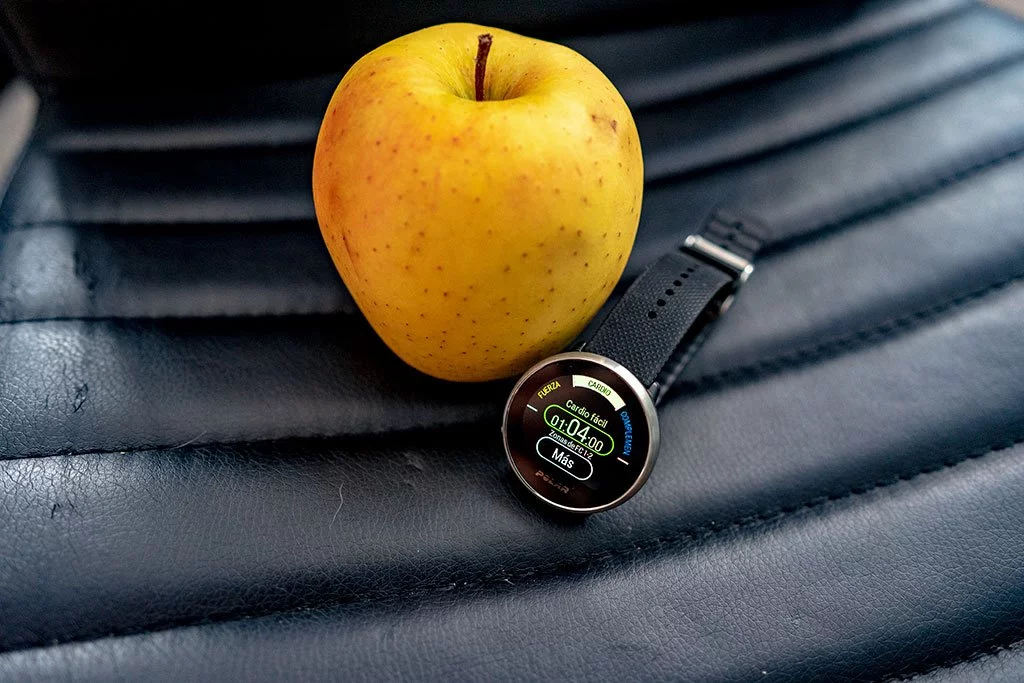











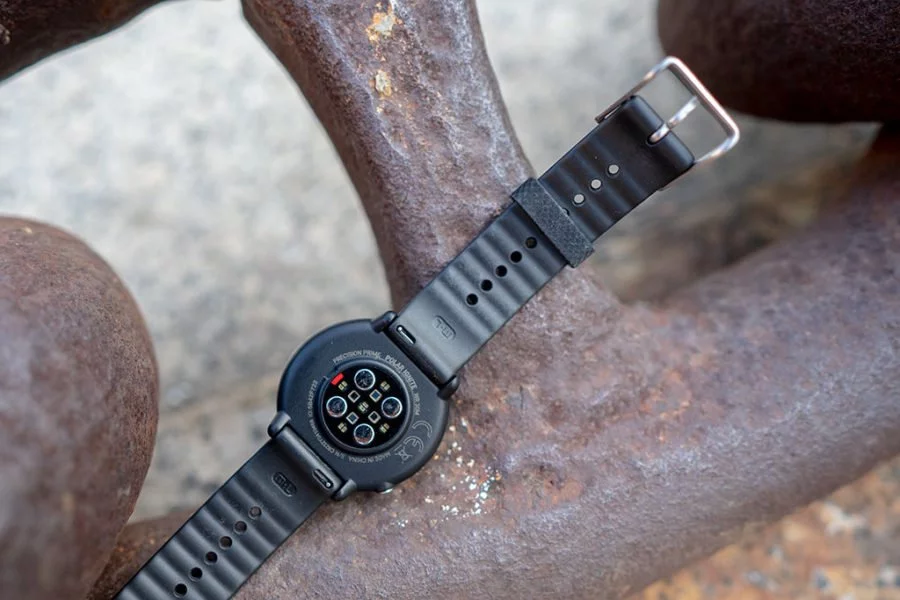
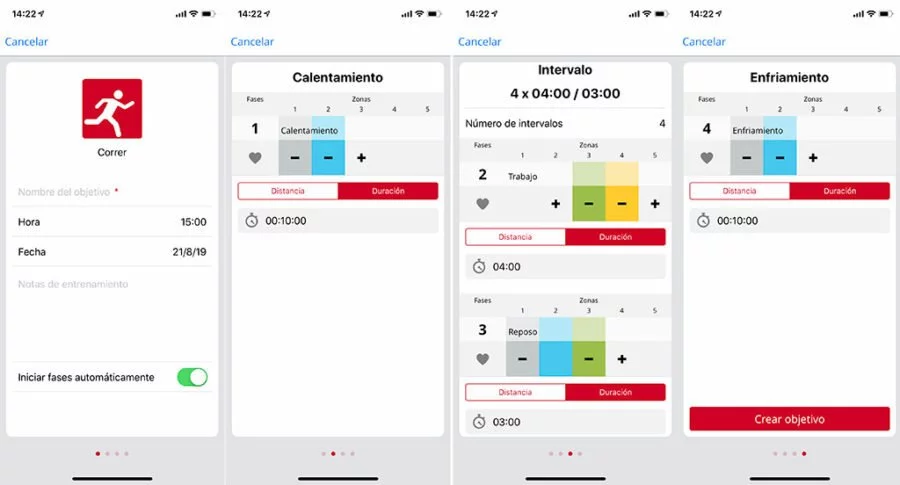

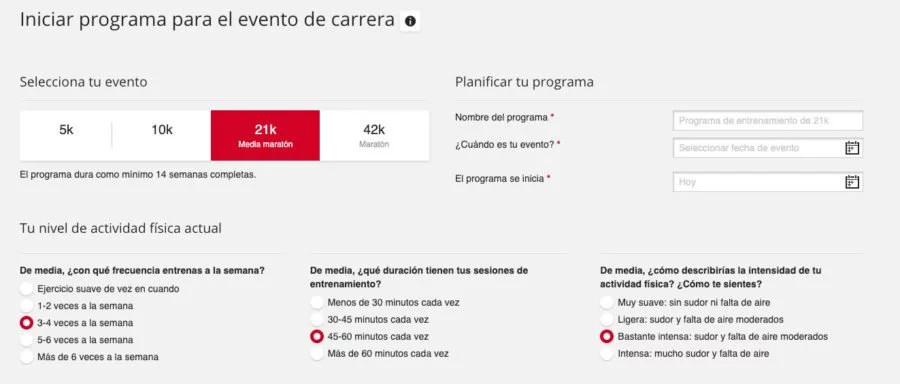
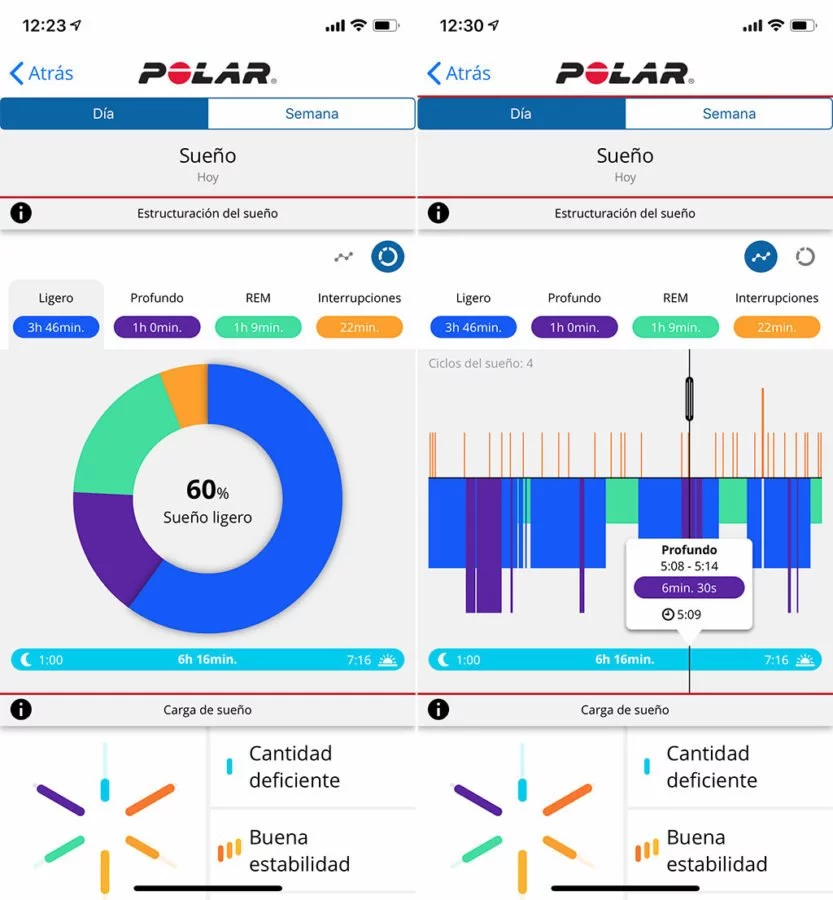

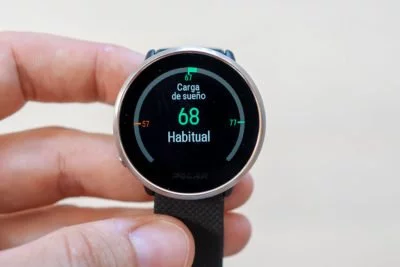
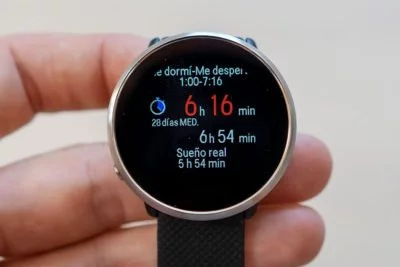

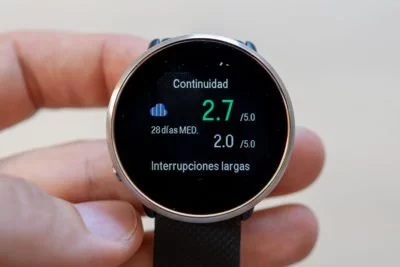
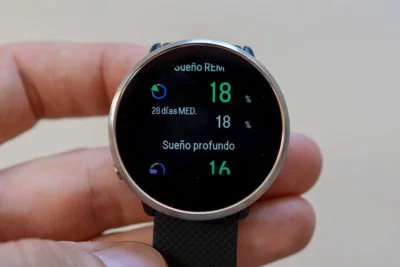

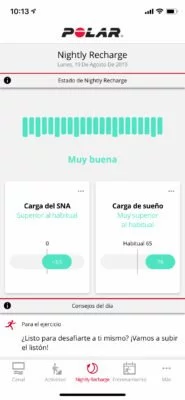
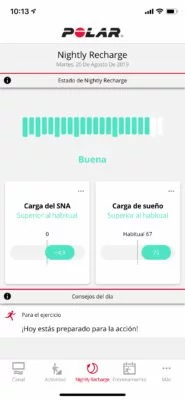
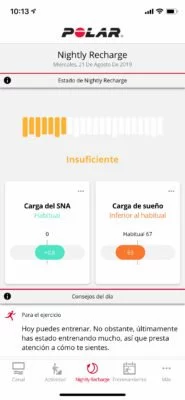
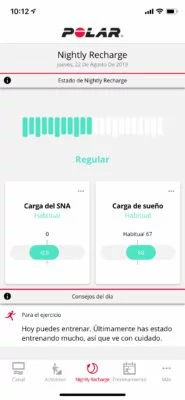
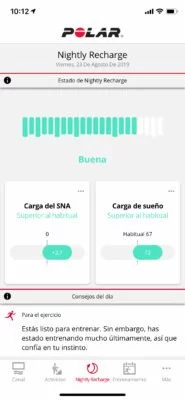

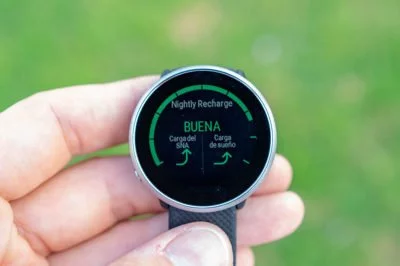
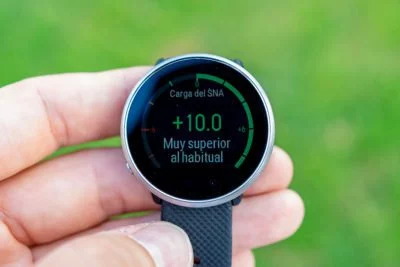
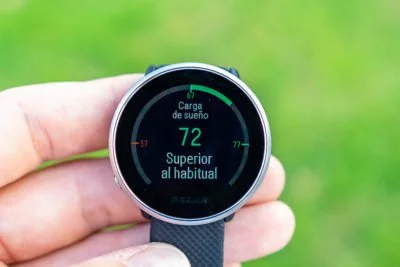
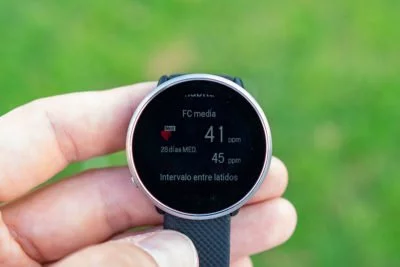
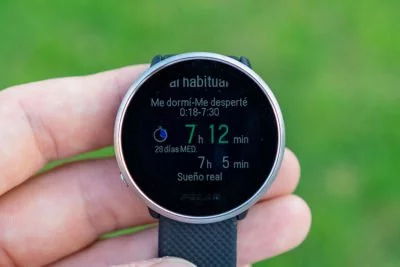
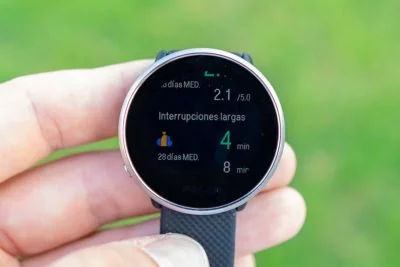









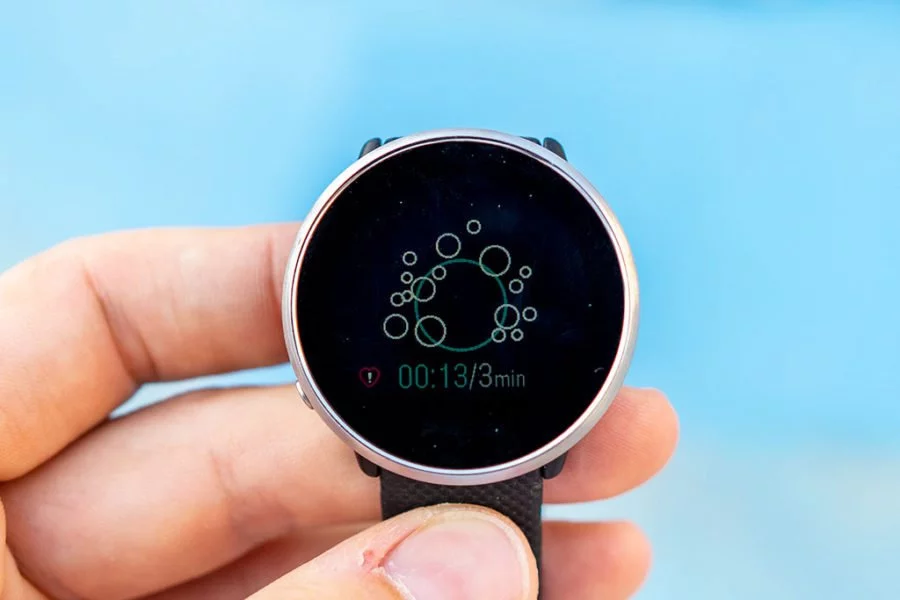
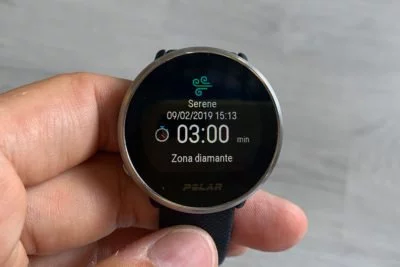
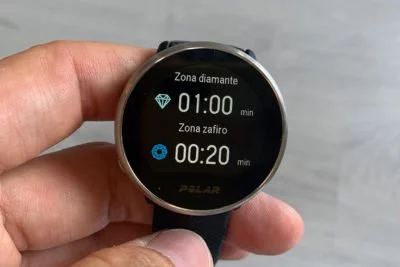
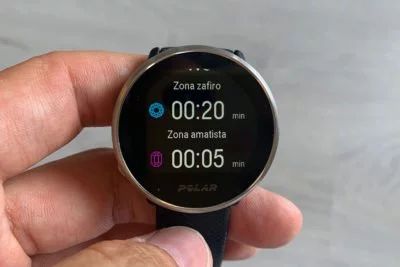






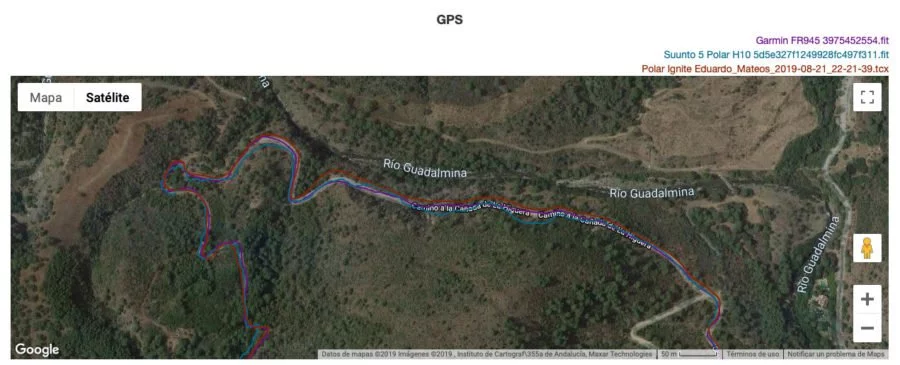

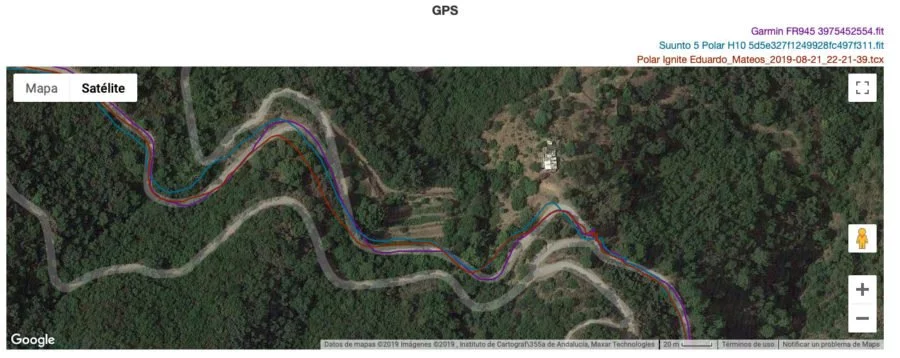

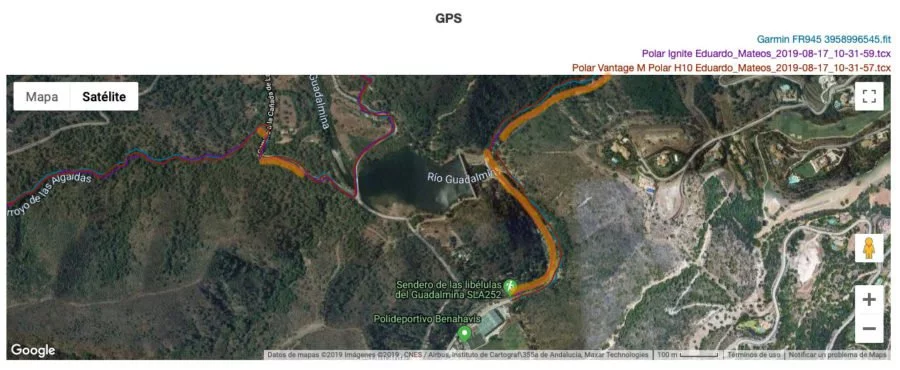
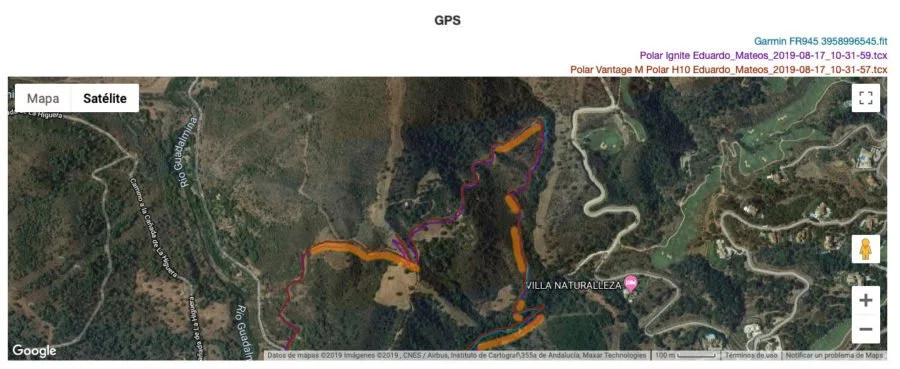

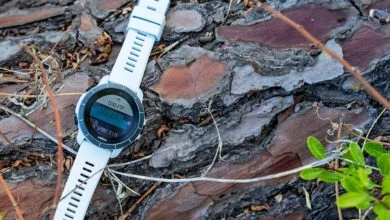
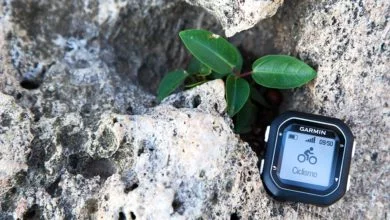
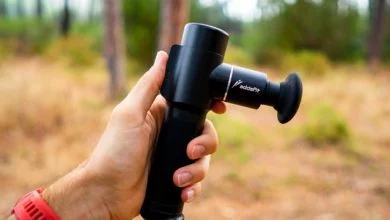
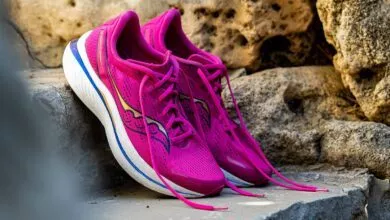
Ansioso de que llegue a los Vantage… Para cuándo estará la actualización?
Falta poquito, a lo largo de octubre estará disponible junto con unas cuantas funciones más.
Genial tu análisis. No se que versión de firmware lleva pero con las ultimas actualizaciones ha mejorado bastante. Para gente sin grandes pretensiones en el deporte es un súper reloj. El Training Load es fantástico para orientarte y saber si lo estás haciendo bien, si estás entrenando suficiente…. y el análisis de sueño es sin duda el mejor del mercado.
Todas las pruebas las he hecho con el reloj actualizado a la última versión de firmware.
Gran análisis, como ya nos tienes acostumbrados
Para uno que hace un poco de todo por mantenerse en forma, ¿recomendarías este, el Vivoactive 3/4, el Vantage M ahora que está muy bien de precio o el Garmin 245?
Saludos,
Para uso general y mantenerse en forma creo que el Garmin FR245 es demasiado. Cualquiera de los otros tres te va a cuadrar y tienen precios similares. Tal vez el Vantage M esté más orientado a deporte más «serio», aunque no hay nada que para un uso genérico impida usarlo salvo la estética, que en los Vivoactive o Ignite está mejor resuelta.
¿Qué tal se comporta en piscina? Leo de diferentes usuarios que no «mide» bien los largos y que la pantalla, al ser táctil, da problemas (esto es lógico). Pero también entiendo que se podrá bloquear y se podrá ver la distancia mientras nadas sin tener que tocar el reloj no?
No he tenido problemas en piscina, más allá del típico error que se puede producir por no terminar un largo o hacerlo de forma que el acelerómetro no lo detecte.
En cuanto a la pantalla, efectivamente se vuelve bastante loca con el agua. Pero se puede bloquear sin mayor problema.
¿Y puedes dejarla bloqueada y ver los metros que llevas y el tiempo mientras nadas no? Girando la muñeca simplemente o tocando el botón?
Sí, toque de botón y se enciende la pantalla
Hola. Qué reloj funciona, bajo tu opinión, mejor como pulsómetro: Polar ignite, Vantage M, Garmin Vivoactive 3,Vivoactive 3 música o Garmin vivomove hr??
Entre esos modelos los Polar están ligeramente por delante, el sensor de los Garmin es el v2. De todas formas si sólo te interesa la parte de pulsómetro, echa un vistazo al Polar OH1.
No…me interesan tb otras cosas del reloj, pero especialmente el pulsómetro, los modos de entrenamiento sí que me dan más igusl. Vi que ahora salieron los Vivoactive, el vivomove 3, y el Venu…compensa alguno de estos más que el Polar?? En el ignite, lo que menos me convence es que se apague la pantalla…y que no le hayan metido ni música, ni NFC…Busco algo un poco versátil, para llevar siempre puesto, que mida las pulsaciones para hacer cardio de manera precisa, y que cuente bien los pasos (que eso doy por hecho, que todos). Luego, el tema música de los Garmin, me llama bastante, pero si el pulsómetro va peor, es lo q más me importa.
EL nuevo sensor de Garmin mejora ligeramente al de Polar, y al Garmin Elevate anterior. Teniendo en cuenta lo que indicas de la música y los pagos inalámbricos, creo que el Vivoactive 4 es lo que buscas.
Me ha gustado mucho su análisis .
Que opina del fitbit versa 2 que sale ahora a la venta.
Lo digo por lo del pulsometro, la orientación al fitness, salud y los entrenamientos que aunque sean de pago parecen buenos.
Lo del gps realmente siempre salgo con el móvil y no me hace falta.
Saludos
Gracias Jesús
Aunque Fitbit Versa 2 y Polar Ignite están enfocados al mismo segmento, el usuario tipo es bastante diferente. El Fitbit es un reloj perfecto para alguien que simplemente quiere permanecer activo. Caminando, algunas clases de gimnasio, etc. El principla reclamo es la plataforma y las competiciones que se pueden organizar con amigos, que es lo que mueve al usuario a estar más activo.
El Ignite es para alguien que entrena algo más seriamente. Menos paseos y más correr. Menos clases de aquagym y más pilates.
No sé si me has entendido sobre cuál es la diferencia entre ellos…
Gran análisis, como siempre.
¿Lo recomendarías para una persona que corre (con series, cambios de ritmo…) y hace fuerza?. Actualmente tengo el modelo M400, el modelo antiguo, y empieza a fallar, y con las funciones que tiene me sobra.
¡Muchas gracias!.
Creo que para tu uso será mejor opción pasar al Vantage M. El motivo principal es que haciendo series, el no tener la posibilidad de marcar vueltas de forma manual es un factor decisivo para pensar en otro modelo.
Buenas tardes, ¿podria recomendarme un reloj para regalar a mi mujar, que corre por las noches y necesita letradas-numeros suficientemente grandes y hace series?
gracias y saludos cordiales.
Alfonso
El Garmin Forerunner 245 Tiene pantalla con buen tamaño y resolución. Soporta entrenamiento de series. Lo tienes aquí.
Muchas gracias por la información, Eduardo.
Muy amable.
Saludos
Alfonso
Hola Eduardo, muchas gracias de antemano para tu analisis, me parece muy interesante. Dudo entre el Ingite y el Vantage M. Hago deporte con regularidad 3 dias la semana principalmente natacion (entrenos de 1,5 horas a un buen nivel en un equipo), futbol sala, padel y actividades en el gym tipo HIIT . No me gusta correr y la bici la uso poquisimo y para dar «paseos». Tengo un trabajo de oficina y viajes regulares a ver clientes
Me gusta mas el ignite pero el tema del sueño y el actividad pero dudo con el vantage M por el tema de la natacion (en caso me anime a travesias). Desde tu punto de vista que reloj recomiendas?
Hola Gianni, gracias.
Si haces mucha natación yo optaría por el Vantage M, por el simple hecho de tener botones. La pantalla táctil no es nada práctica durante la natación, por lo que la evitaría.
Pero quizás no sea un reloj que tenga una buena apariencia en entorno de trabajo, así que en ese caso quizás debieras pensar en el Vantage V, que ya tiene otra «prestancia».
En cuanto al sueño y actividad, los Vantage ya se han actualizado e incluyen todo eso, por lo que ya no es una diferencia a favor del Ignite.
Buenas tardes. Felicitarte por el análisis realizado, me está sirviendo de gran ayuda para decantarme. En mi caso, realizo actividades tipo body combat, pump o ciclo indoor entre otras, 4 días/sem. Aún así necesito ayuda para decidirme por un polar ignite o vantage M. Help me. Muchas gracias.
Para esos deportes, la diferencia se centra en el tipo de pantalla que utilizan. Por tanto ya es una elección personal que depende de si quieres pantalla AMOLED o transflectiva
Existe alguna forma de apagar totalmente el polar ignite?
No, los Polar permanecen siempre encendidos
Hola, utilizo Polar Ignite para running. Me gusta su pulsometro pero su GPS me falla bastante.
Me recomendarías un Polar Vantage M para resolver el problema con el GPS?
O una alternativa, como el Coros Apex?
(Necesito un buen pulsometro y un GPS muy exacto. Si no hace falta cambiar de marca, me quedaría con Polar para poder seguir utilizar Polar Flow.)
Sí, creo que el funcionamiento del GPS del Vantage M es superior. ¿Solucionar el problema? Pues todo depende de en qué zonas entrenes y cómo sea la recepción de señal, pero en mis pruebas sí que pude constatar que el GPS del Ignite no es su mejor virtud.
Buenas tardes, tengo un polar ignite y una ba da h7.
¿Cómo se cuado las pulsaciones las mide el sensor óptico o la banda?
Es decir, si mlevo puesta la banda h7 y está sincronizada con el reloj, automáticamente las pulsacionew vienen de la banda?
Hay alguna diferencia en algún logo o algo para saberlo?
Creo que el sensor óptico deja de brillar cuando tengo puesta la banda.
Puede ser cierto?
Muchísimas gracias por el análisis tan bueno.
Un saludo
Siempre que lleves el sensor de pecho los datos de pulsaciones provienen de él. En el reloj se puede ver en el inicio de antes de comenzar la actividad porque las pulsaciones aparecen con un borde azul (en lugar de verde, que indica el sensor interno).
De todas formas, como dices al usar el sensor externo no verás parpadear las luces del sensor óptico.
Hola, el tema de la batería cómo va, entiendo que si dura unos 5 días en modo reloj y 17 horas con el uso de GPS y fc, si por ejemplo en 5 días he practicado deporte durante 3 días a 1 hora al día y la he registrado con el reloj, necesitaré aproximadamente unos 5 días entre carga y carga del mismo?, entiendo que con el uso diario el reloj registrará las pulsaciones y el gasto calórico y sólo con ese uso me durará 5 días la batería y cuando lo uso registrando alguna actividad deportiva, sólo me aguantaría 17 horas, no? Otra cosa que quería saber es si al empezar por ejemplo un partido de fútbol hay que tocar algo en el reloj para que lo registre o automáticamente lo establece el reloj y que pasa si no establecemos dicha actividad, los datos del reloj no serían correctos? Gracias
Si practicas deporte lógicamente se irá reduciendo autonomía total, que dependerá de cuánto sea el uso de GPS que se haga.
Para registrar una actividad hay que iniciarlo, los relojes que detectan actividad automáticamente simplemente sirven para paseos y poco más.
Entonces, con un uso diario que te vaya dando pulsaciones, calorías quemadas, control del sueño y unas 3 horas a la semana usándolo en modo deportivo, la batería dura los 5 días que anuncian o se quedan en bastante menos?
Saludos
No, los 5 días es uso sólo como reloj. A medida que vas haciendo uso de diferentes opciones (GPS, entrenamientos en general, notificaciones, etc) la autonomía se va reduciendo.
Pero ese uso como reloj también incluye las medidas de frecuencia cardiaca y distancia recorrida diarias sin usar el registro de actividad?, por eso preguntaba que usándolo a diario para saber las calorías gastadas, distancia recorrida y frecuencia cardiaca y opcionalmente unas 3 horas semanales registrando algún tipo de actividad deportiva, cual sería su autonomía. Muchas gracias
Es que todo dependerá de cuánto sea el uso, cuántas notificaciones, cuántas veces se aumente el brillo de la pantalla…
Buenas, ya hace 3 años que uso una Garmin vivosmart HR. Practico MTB recreativo (XC-XCM). Llevo un tiempo dándole vueltas al tema de los ciclocomputadores y/o relojes más completos. Principalemente me interesa poder navegar si lo necesito y las métricas básicas como las que tengo actualemte y poco más (actividad, pulso, sueño…).
No me acaba de convencer invertir en un dispositivo para un solo uso (GPS de bici) y en cambio me gusta bastante la idea de un reloj, que en un momento dado pueda usar para cargar una ruta y usar cinta de pecho (para mi uso, por lo general, con el sensor de muñeca me apaño).
He visto y oido en el podcast lo que mencionas sobre Polar y me parece interesante, aunque me temo que para navegación nos tenemos que ir a gamas altas…
¿Algún consejo? tampoco descartaría Sigma u algun otro fabricante europeo fiable.
Gracias.
Si lo que haces principalmente es bici… ciclocomputador sí o sí, especialmente si estás pensando en la navegación. En cuanto a navegación, el Ignite no tiene, pero la que puedes encontrar en otros modelos de gama superior como el Grit X tampoco es que sea para tirar cohetes.
Ok, y en este caso y necesidad concreta, cuáles serían las mejores opciones?
Si el uso principal es la navegación, sin duda el Garmin Edge Explore
Hola Eduardo,
He leido varios de tus análisis y me parecen magníficos, con gran nivel de detalle.
Yo tengo una duda que es la siguiente: vengo usando un Amazfit Stratos 2, por dos años, y justo ahora se me ha estropeado. Con el reloj estaba «bastante» contento en cuanto a la cantidad de información que facilitaba en la carrera y con poder llevar la música en el mismo sin llevar el móvil.
Los deportes que práctico son 3-4 días Crossfit, 1-2 Correr (tanto llano como montaña, aunque llano principalmente) y ocasionalmente juego al tenis, nado y hago deportes acuaticos (paddle surf). Adcionalmente a la parte deportiva, me gustaria llevarlo en mi día a día (por lo que un aspecto «premium» o de domingo como le sueles llamar, tamién lo valoro). Mi problema viene principalmente por la gran diferencia en los deportes y ese aspecto para el día a día.
De los análisis que he visto, hay varios relojes entre los que no sé cual se adaptaria mejor:
Polar Ignite
Polar Vantage M
Garmin Vivoactive 4
Garmin Forerunner 645 music
Segun tu conocimiento al respecto, tanto por algoritmos, como por estar enfocado a, cual/es serian tu elección.
Muchas gracias de antemano y perdon por el «tocho»
Para ese uso que indicas, creo que el más indicado sería el Vivoactive 4. Incluso tendrás perfil específico de paddle surf.
Buenas tardes
No hago más que leer tus reseñas. Me parecen geniales, ENHORABUENA!
Tengo un Polar 400 que tengo que cambiar. Yo realizo entrenamientos de futbol 3 veces por semanas y dos días me voy a correr unos 6 -8km. Me gustaría aprovechar también para que el reloj me pudiera recibir llamadas.. He leído que el Forerrune y el Ignite lo hacen a tí que te parece que me puede ir mejor?
Gracias.
Para ese tipo de uso y viniendo de un M400 creo que el Ignite te puede encajar bastante bien. Eso sí, ten en cuenta lo comentado acerca de la detección del giro de muñeca para encender la pantalla. La otra opción puede ser el Vivoactive 4.
Eso sí, en ambos casos el reloj sólo notifica la llamada, pero no puedes hablar a través de él.
muchísimas gracias.
Buenas acaban de regalarme un polar ignite, en natacion no consigo que cuente bien la distancia, nado en una piscina de 25 m. Eso es lo que tengo puesto en el reloj. Cuenta aproximadamente un poco más de la mitad.
Alguna explicación, se le ocurre?
Muchas gracias
El reloj cuenta la distancia a través de la detección por el acelerómetro interno. Por ello es importante que a la hora de realizar los giros el movimiento sea lo más natural para que el reloj pueda interpretarlo correctamente.
Buenas tardes.
Me ha servido de mucho toda la información que comentas, sin embargo sigo teniendo dudas entre el Polar Ignite y el Polar Vantage M. Salgo a correr 3 días a la semana y otros 2 hago entrenamiento de fuerza. Me interesa también la información acerca del sueño y la estética del reloj para poder usarlo a diario.
¿Cuál me recomendarías en mi caso?
¡Muchas gracias! Un saludo.
La información del sueño que te ofrecen Ignite y Vantage M es la misma, ahí no hay diferencias. En cuanto a estética el Ignite gana, tiene un mejor aspecto y una pantalla más llamativa.
Todo depende de si tus entrenamientos de carrera son simplemente para disfrutar del deporte, o es con fines competitivos. La principal ausencia del Ignite es no poder marcar vueltas, y luego en cuanto a entrenamientos de carrera.
En definitiva, si la carrera es competitiva me iría al Vantage. Si es más por la práctica deportiva, el Ignite te cubrirá perfectamente.
Genial, ¡muchísimas gracias!
Muchísimas gracias por tu análisis.
Quieto comprar un pulsómetro pero me interesa mucho que tenga un aviso claro y efectivo cuando me salga de la zona de frecuencia cardíaca elegida.
Puedes ayudarme al respecto, aconsejándome qué pulsómetro comprar, o señalando tu impresión al respecto, en el polar ignite.
Gracias y un saludo.
El Polar Ignite no tiene función de Zone Lock, tendrías que ir a algún modelo superior de Polar o bien a algún Garmin